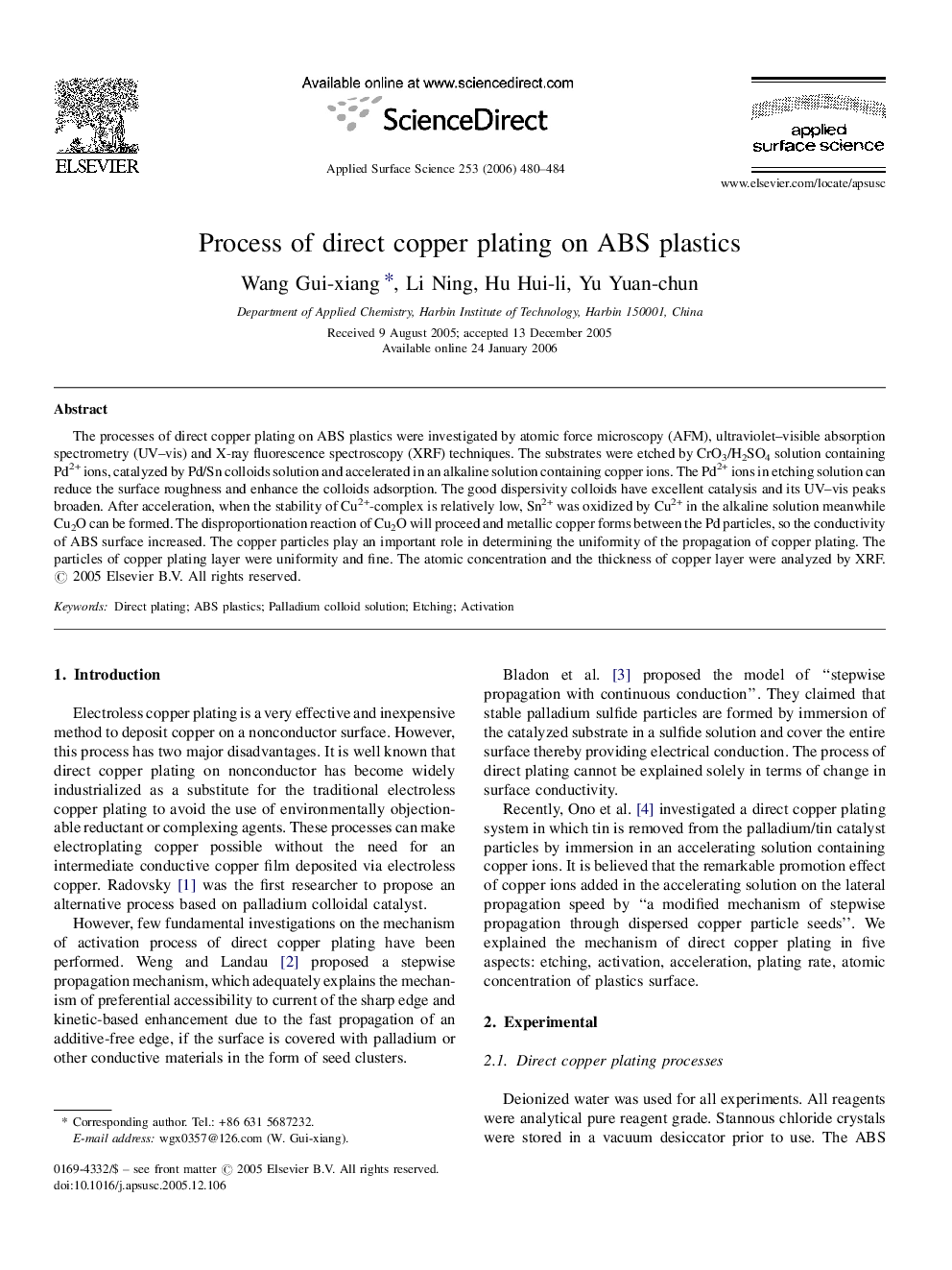| Article ID | Journal | Published Year | Pages | File Type |
|---|---|---|---|---|
| 5370221 | Applied Surface Science | 2006 | 5 Pages |
The processes of direct copper plating on ABS plastics were investigated by atomic force microscopy (AFM), ultraviolet-visible absorption spectrometry (UV-vis) and X-ray fluorescence spectroscopy (XRF) techniques. The substrates were etched by CrO3/H2SO4 solution containing Pd2+ ions, catalyzed by Pd/Sn colloids solution and accelerated in an alkaline solution containing copper ions. The Pd2+ ions in etching solution can reduce the surface roughness and enhance the colloids adsorption. The good dispersivity colloids have excellent catalysis and its UV-vis peaks broaden. After acceleration, when the stability of Cu2+-complex is relatively low, Sn2+ was oxidized by Cu2+ in the alkaline solution meanwhile Cu2O can be formed. The disproportionation reaction of Cu2O will proceed and metallic copper forms between the Pd particles, so the conductivity of ABS surface increased. The copper particles play an important role in determining the uniformity of the propagation of copper plating. The particles of copper plating layer were uniformity and fine. The atomic concentration and the thickness of copper layer were analyzed by XRF.
